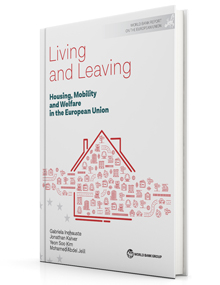
Availability and affordability of decent housing has become an important economic and social concern in the European Union (EU). This has accelerated in recent years, as housing price increases in metropolitan regions have often outpaced wage increases. Across Europe, people are anxious about their ability to find and afford decent housing. In 26 of the 28 EU capitals, most respondents disagreed with the statement that finding good housing at reasonable prices is easy (EC, 2016a). Young people and newcomers to cities are especially affected, while older generations owning homes in prime locations have benefited from the rise in the value of these assets.
Housing is at the heart of growing economic divides in Europe. This is because productivity growth, which comes with higher wages and better jobs, is concentrated in cities and industrial clusters. Yet, cities are precisely where housing prices are prohibitive. Land and housing assets are a source of wealth inequality, have an important impact on spatial inequality, and could potentially determine the degree of intergenerational mobility within a society.
Housing is unaffordable in metropolitan centers because the construction of new homes has not kept up with demand. Housing shortages and the rise in home prices prevalent in many EU cities indicate that housing markets are not functioning effectively. While policy incentives (taxation benefits, easing of financing conditions) have favored homeowners since the 1970s, less attention and resources have been devoted to easing the potential barriers and market restrictions that would allow housing supply to respond to increases in demand. Across EU member states, policymakers should focus on ensuring that land use, rental and other regulations are consistent with incentives to spur residential construction.
